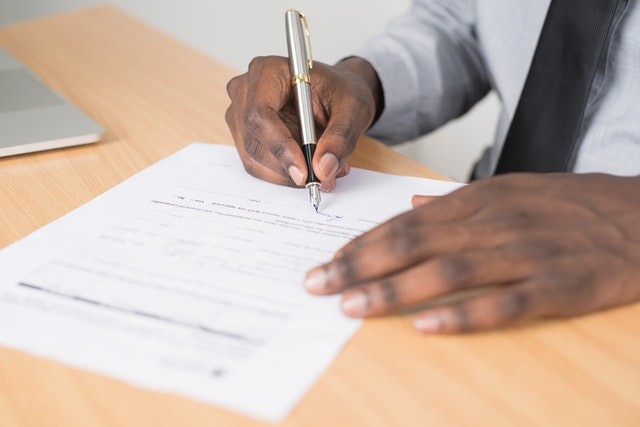Preparation involves:
The Draft
This is the document in the form which satisfies the instructions given concerning its intentions. It is usually prepared in three copies, so that two copies may be sent to the opposing solicitor, and one copy retained. The top copy is then returned "approved as drawn", or amended in red print. This ensures that the order of the amendments can be followed.
The Draft should be typed in double or treble line spacing, and dates, sums of money, etc.., should be in words or figures or both, according to the manner in which they will appear in the engrossment.

Practice Typing Legal Documents
Abbreviations are not used in draft documents. The endorsement should contain the word "Draft", and at the foot, the name and address of the solicitor who prepared the Draft.
The date at the beginning of a document and on the endorsement is left blank, an is added in ink at the time of signing the Engrossment.
The Engrossment
This is the document in its agreed final form. The size and type of paper used, an depth of line spacing, varies according to the wishes of the person preparing the document. It is customary to type documents expected to have a long life, e.g., Conveyances, Leases, etc., on paper parchment. Double spacing is generally used.
The final page should be left blank for the endorsement. If this is not possible, an extra age should be added at the end of the document. The endorsement should not contain the name and address of the solicitor who prepared the document.
Practice Typing Legal Documents
Endorsement
This contains the details and description of the document;. It should be in the following order:
- The date of the document
- The names of the parties
- The description of the document
Always type the endorsement so that it will be positioned on the outside of a document after it has been folded either in two lengthwise with the crease on the left or into four. Counterparts
These are identical documents each of which is signed by one party only. A lease is usually the most usual type prepared in original and counterpart. The counterpart is executed by the tenant and exchanged for the original, executed by the landlord. The counterpart should be marked on the endorsement.
Certified copies
These are frequently required and are normally photocopies of executed stamped documents. They are certified thus: "I/We certify this to be a true copy of the original" and signed by a solicitor. These words are place where it is convenient.
Your first legal document for you to practice typing is a Will. Make sure you understand the rules before you start. Click the link below to begin.